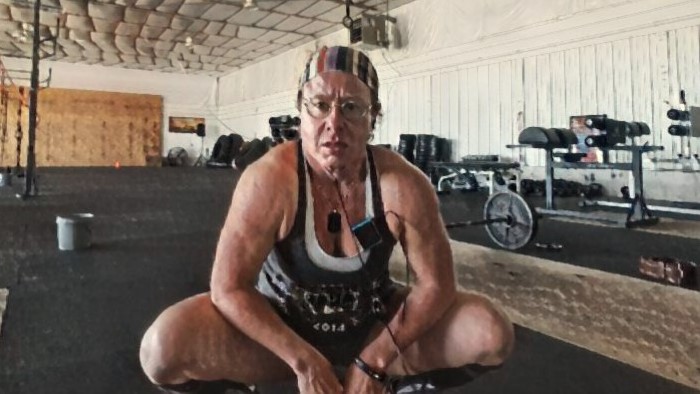
The much-expected moment of reopening gyms has been declared in several states.
Most chain gyms are emphasizing social distancing and frequent hand washing. They are focusing their efforts in enforcing social distancing through mechanical means such as plastic dividers between treadmills and other equipment, or even plastic tents for individual workouts. These alternatives are not considered effective by public health authorities. In fact, it is not necessary to have a public health or virology degree to intuitively understand the problem with these measures. Not only do they fail to enforce the minimum distance requirement between individuals at all times (except when both are exactly beside each other using their equipment) but they play against the development of self-awareness.
Here is a list of recommendations I compiled to provide safety against contagion in the training environment. Safety, cleanliness, and hygiene are mandatory, as the COVID-19 pandemic still represents a big health threat in the present and for the foreseeable future. The worst threat is the silent one: the asymptomatic host contagion. It is my belief that those gyms that succeed in implementing effective measures will enjoy a double reward: in the short term, the community’s safety against SARS-CoV-2 contagion. On the long run, the prevention of several infections caused by viruses and bacteria. Like me, many people will recall the quick spread of colds and norovirus digestive tract infections among members of the same gym. The pathogen’s spread is facilitated by the type of contact between gym members.
General habits:
For a while, enthusiastic hugs will have to be suspended: we are usually unaware of how much aerosolized saliva is produced as we talk or even breath. Unlike the flu viruses, SARS-CoV-2 has a high resistance outside the host’s body and viable virions were found up to 19 days in dry surfaces.
- Keep at least 3 (three) feet between people. No hugging or handshaking.
- Do not share personal objects or equipment. Your water or supplement bottle is yours only, as well as your wraps, sleeves and towel.
- Keep your personal items in a locker. If there isn’t one, don’t be a slob: keep your thing clean and organized in your corner.
Training behaviors:
Several gyms in different countries are adopting the use of masks while training. This is not recommended by the World Health Organization: during periods of higher breathing frequency, the mask becomes quickly wet, making breathing even harder.
Besides that, intense breathing with a mask increases the quantity of carbon dioxide (CO2) being inhaled. That, in turn, increases respiratory rate even more and can end up impairing cognitive functioning. The risks there are obvious and include inadequate movement execution, increasing injury rate. However, if you and your training partners decide to do things that put you in close contact or risk of body fluid (saliva and sweat) exchange, you should put on your mask. Examples:
- Handing off the bar and spotting during the bench press. Check out some videos and observe that, except in competition, whoever is handing off the bar keeps looking down at their partner as they execute the lift. The two are inevitably exchanging aerosolized (or even larger droplets) saliva.
- Any other assistance that involves body contact.
General habits for the gym environment:
- If you need to sign or touch anything when you arrive at the gym, clean your hands before and after doing that. If you wash your hands, do so with soap for approximately 20 seconds. If you are the owner or manager, make sure alcohol hand sanitizer gel recipients are available at the entrance and in the cleaning stations.
- At the bathroom, disinfect the toilet seat before and after using it.
- Wash your hands frequently with soap, if possible, between each different activity (or use alcohol hand sanitizer gel).
If you are the gym owner:
Keep “cleaning stations” spread throughout the gym space, making it easier for members to adhere to the new standards. The stations may be supplied with:
alcohol hand sanitizer gel;
liquid alcohol (isopropyl 90% or ethanol 70%) spray bottles;
diluted bleach (1/3 cup for a gallon of water) or detergent;
paper towels or cloth;
container for used cloths;
steel or brass brushes for Olympic lifting bars.
How to take care of training equipment:
Bars, kettlebells, dumbbells and metal handle items for machines:
As I mentioned before, SARS-CoV-2 has great resistance outside the host’s body. That means bars, handles, cables, kettlebells and dumbbells can be contaminated by a gym member’s sweat and saliva.
The mixture of water, salts, protein, skin shedding and fat that we leave on these equipment items is a culture medium for bacteria and fungi as well as a preservation environment for viruses. The knurling in Olympic bars is particularly favorable for microorganisms’ reproduction and protection.
After handling any of these equipment items, disinfect them with alcohol spray and dry them with paper towel or cloth.
To owners:
- bleach is not an appropriate disinfectant for steel objects. With time, it will damage them. Among the most affordable products, liquid alcohol is the best alternative for disinfecting them.
- if your clients use a lot of chalk, make a few steel or brass brushes available so that they may clean the knurling before using the alcohol spray.
- for good barbell maintenance, in case there is humidity over them, you may apply good quality rust remover over the body of the bar and dry it with a clean cloth. You may use WD-40 or other lubricant at the sleeve junction and only there.
Mats, medicine balls and other equipment covered with plastic or rubber:
There are several options for liquid spray disinfectants:
diluted alcohol
diluted detergent
diluted bleach
diluted general cleaner
Anyone who uses them should spray the product over the equipment and dry it with a paper towel or cloth.
Mats with a torn plastic, exposing the foam, should be discarded.
For owners: bumper plates and rubber-coated plates
Instruct your clients to clean them like the plastic and rubber items above. However, they should receive special treatment with a silicon-based product with some frequency because they may become dry and brittle. Automobile products can be used.
Ropes:
- Jump ropes should have their handle disinfected like the other plastic and rubber items.
- Climbing ropes or training ropes require that the person cleans their hands before using them.
Floor, static equipment, and surfaces:
Dust is generated daily and in large quantities. Dust is made of anything that sheds flakes or fiber: clothes, skin, hair, rubber objects, wood, ropes, paper, etc. Dust masses (“dust bunnies”) form a small ecosystem where several microorganisms live.
Dust must be removed frequently. The floor must be swept and vacuumed. If possible (depending on the material), also disinfected with a liquid product. All the surfaces (racks, counters, shelves, windows, etc.) must be disinfected with a wet cloth.
The bathroom and kitchen must be disinfected every day and submitted to deep cleaning once a week: floors must be washed, corners brushed, walls and ceilings cleaned. If the gym has ceiling fans, the blades must be regularly cleaned. There are several cleaning tools that make these tasks easier, such as industrial vacuum cleaners, fan blade cleaners, steam cleaners, etc.
With these measures, all your gym community will be as well protected as possible. If the new habits are maintained, even when hugs and handshakes return, even better.









